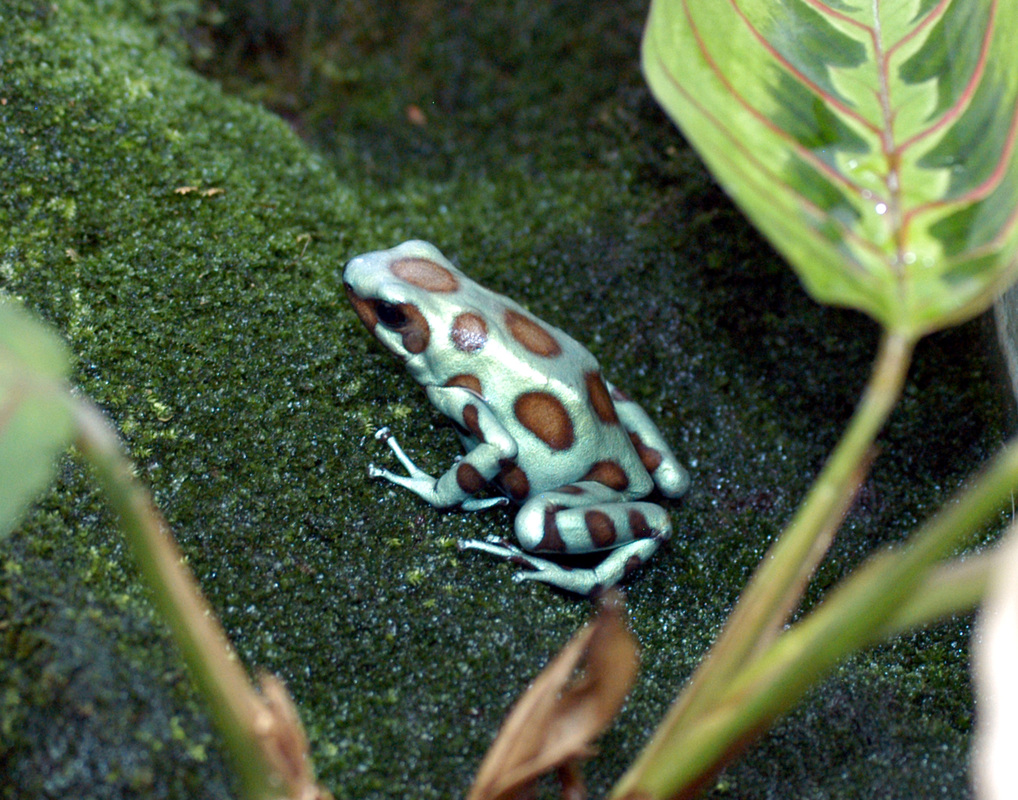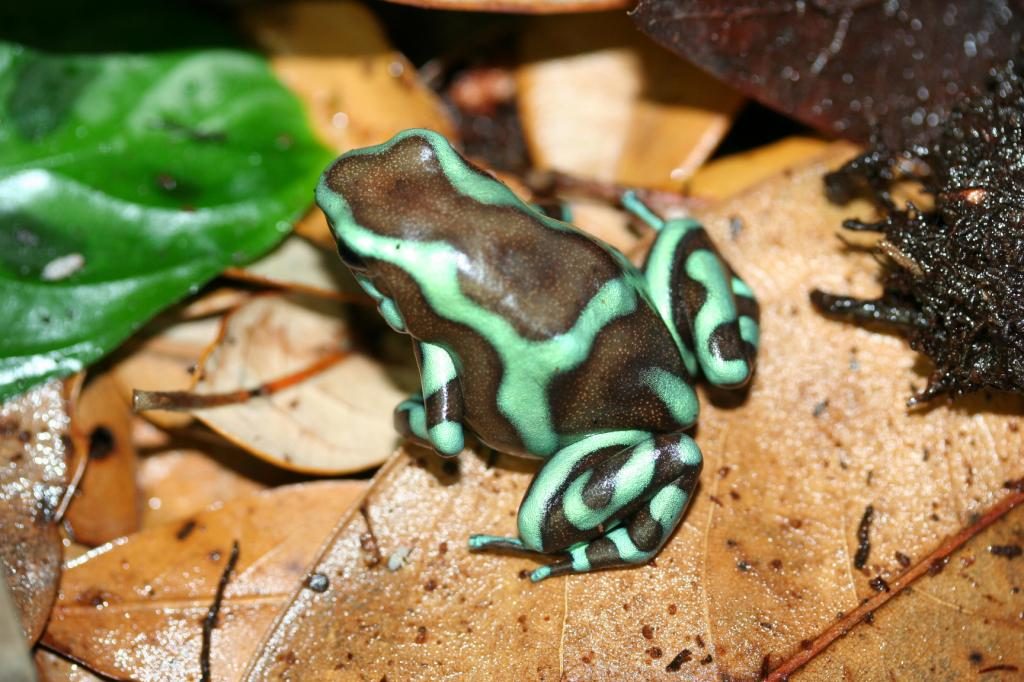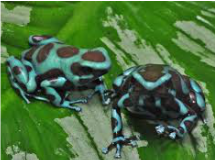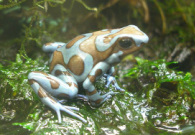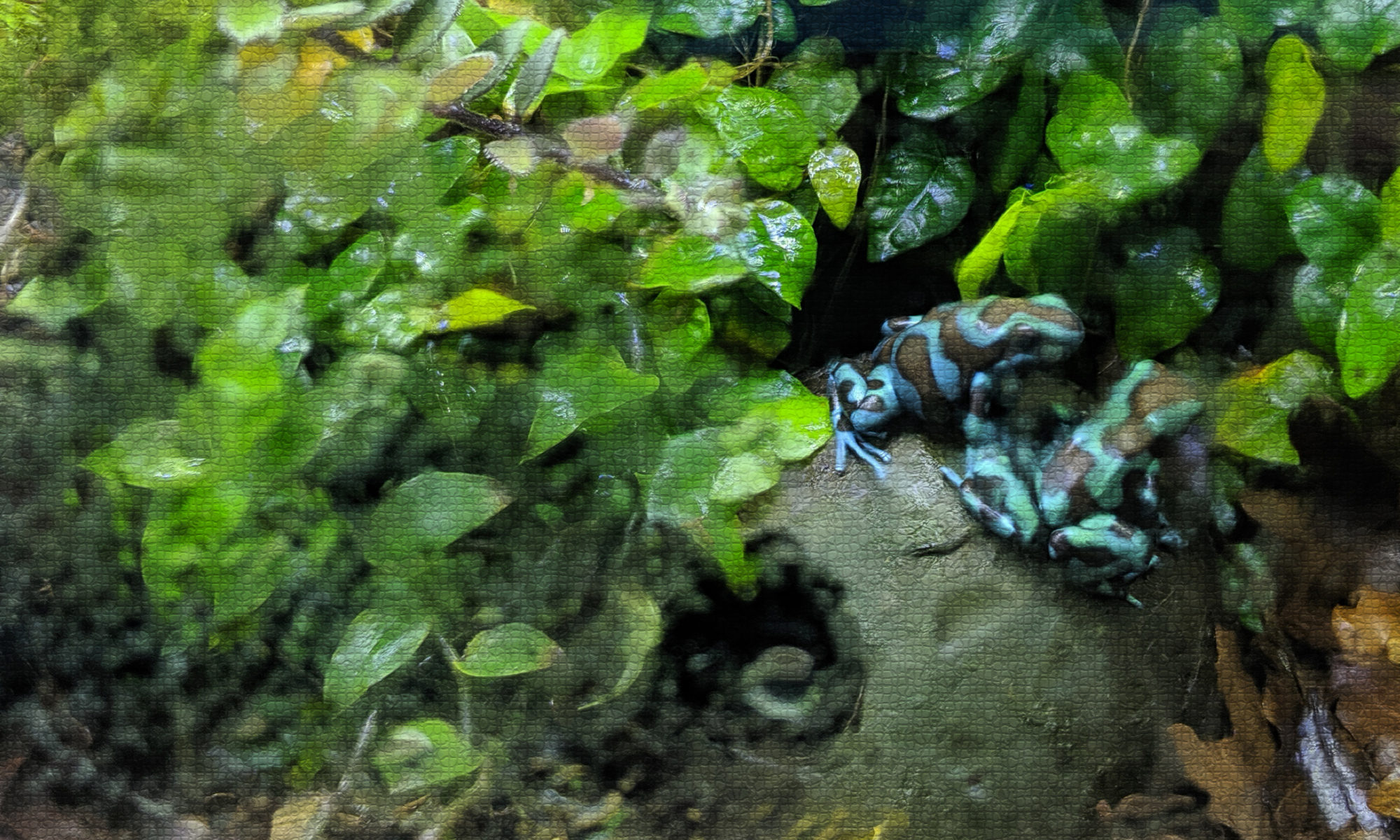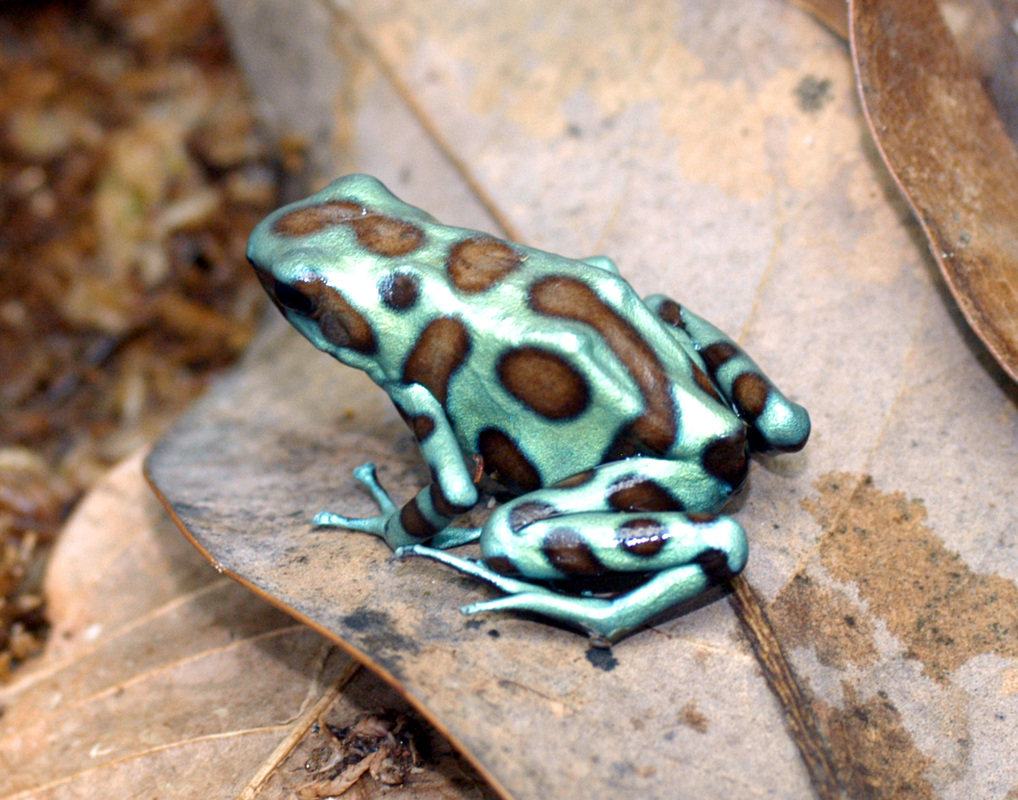
During the years 2002-2004, thousands of Dendrobates auratus were exported from Panama. These frogs came in with no locality data and were said to be ‘farm raised’ in their country of origin. Many of these Panamanian imports were bronze frogs. They ranged from green and bronze, blue and bronze, microspot, etc… All these frogs came in together during these imports. They were segregated by visual similarity, putting the blue frogs with other blue frogs and the green frogs with other green frogs. Maybe these colors represent different localities, or maybe they represent one locality. We do not know! The idea that every different colored frog represents a different population or a different ‘morph’ is not substantiated. This is because morph/locality identification based on phenotype is not accurate, and because individual frogs produced differently colored offspring. For example: two of those original frogs that were visually green and bronze could be bred together and produce offspring that are mixed in color and pattern, being green/blue/turquoise etc… Another example are the microspot auratus which do not breed true and so are probably not their own morph, but rather just a pattern variation of the green and bronze frogs.
And so, from these importations, breeders acquired groups of frogs that were visually similar. The breeders bred these frogs and got variable offspring. These frogs then became known as a particular ‘line’ of bronze auratus.
Each line of frogs originated with a small group of the imported adults. It is likely that each breeder obtained a group of animals that looked similar to one another. Amongst any line of these frogs, selective line breeding for traits may or may not have happened, but the result is confusion relating to what lines can and cannot be considered the same ‘morph.’
For further discussion on this morph see The Bronze auratus info thread
